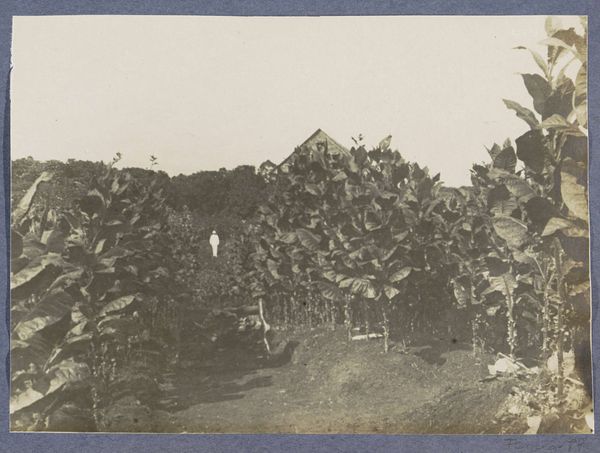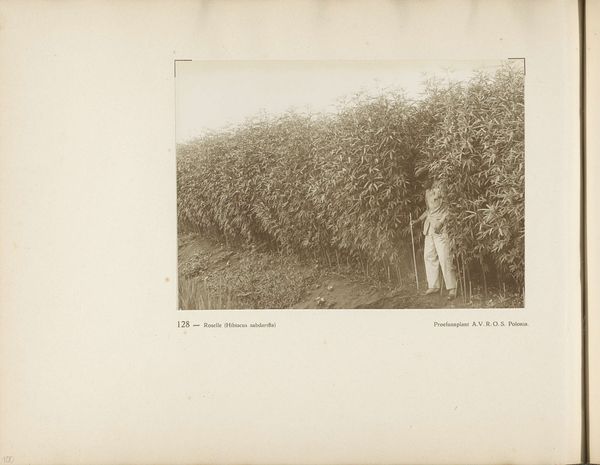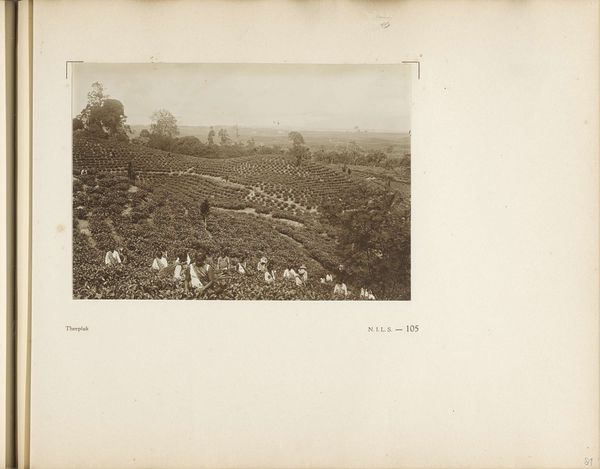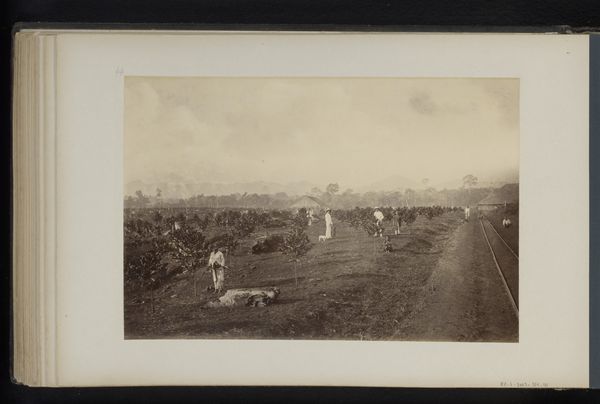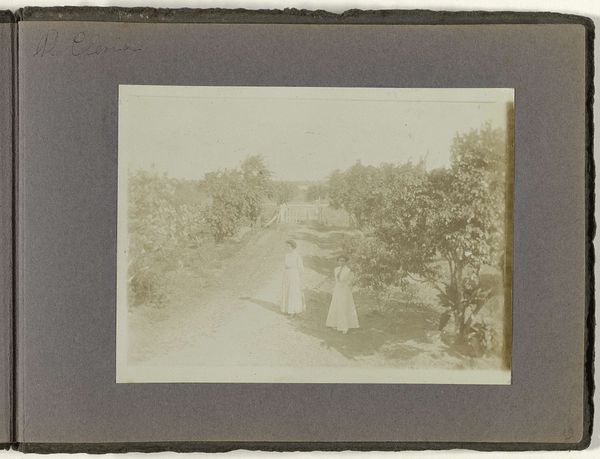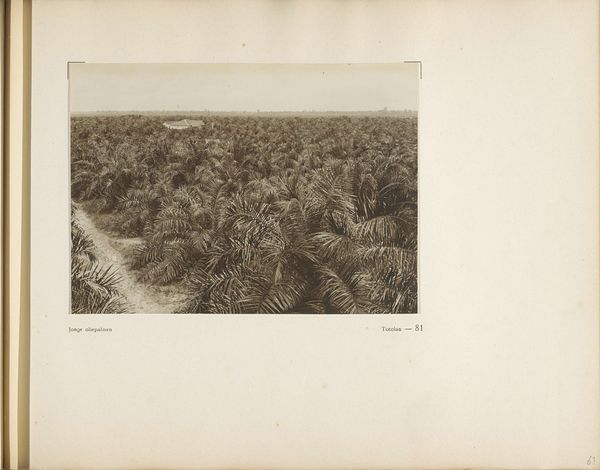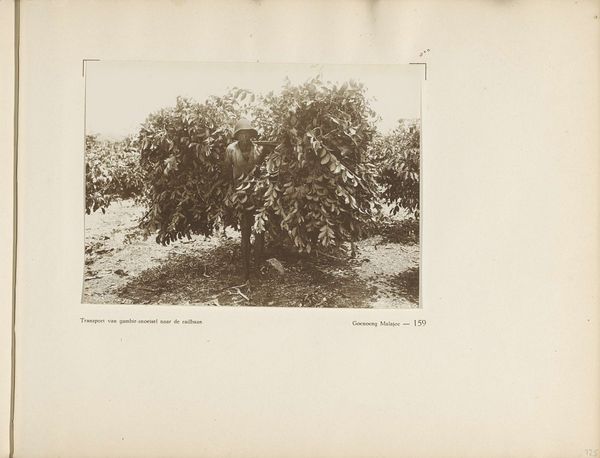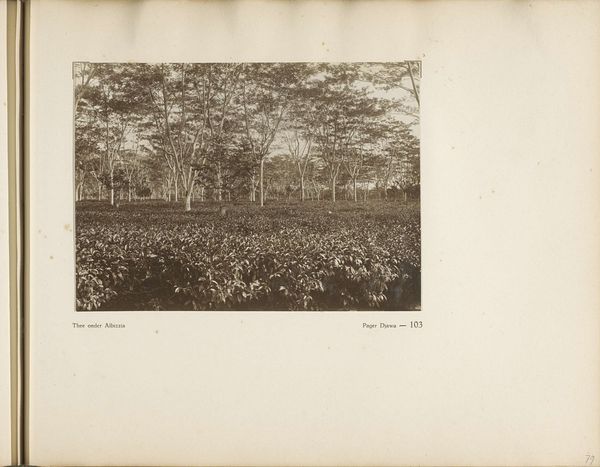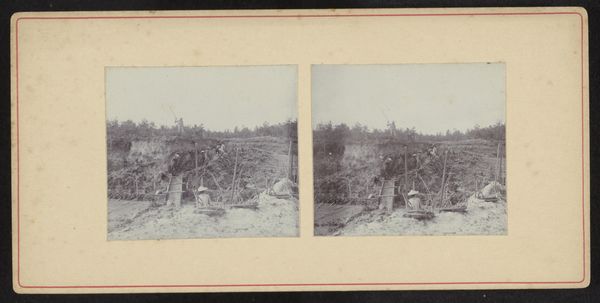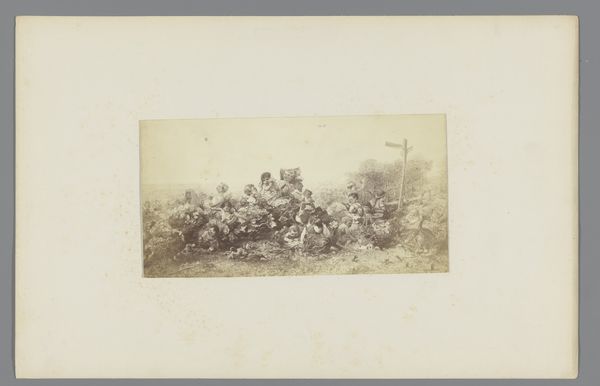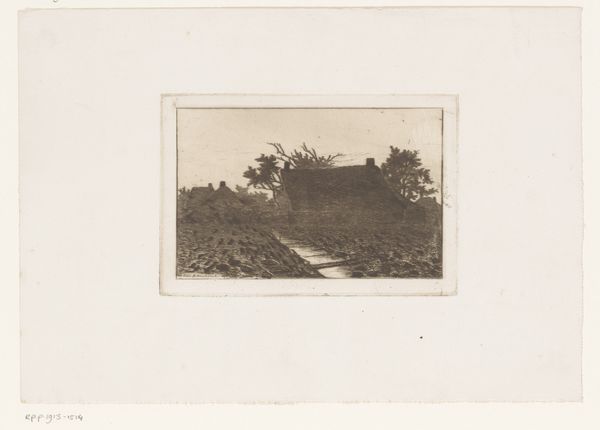
Pagina 104 van fotoboek van de Algemeene Vereeniging van Rubberplanters ter Oostkust van Sumatra (A.V.R.O.S.) c. 1924 - 1925
0:00
0:00
photography, gelatin-silver-print
#
landscape
#
photography
#
orientalism
#
gelatin-silver-print
#
genre-painting
Dimensions: height 240 mm, width 310 mm
Copyright: Rijks Museum: Open Domain
Editor: So this is a page from a photo book by J.W. Meyster, dating back to around 1924-1925. It's a gelatin silver print from the Rijksmuseum's collection. It shows workers in a field… it’s peaceful at first glance, but also kind of melancholic. What catches your eye in this image? Curator: The immediate visual symbolism lies in the hats, wouldn’t you agree? The conical shape, uniform in appearance, speaks volumes about collective identity and perhaps even subservience. Hats, across cultures, often denote status or roles. What story do you think these hats are telling? Editor: That’s interesting! I hadn’t thought about the hats so specifically. They seemed more like practical sun protection. Maybe their uniformity points to a collective labor experience, but the ‘subservience’ angle is provocative. Curator: Precisely. Think of the cultural context: it is colonial Sumatra. The very act of photographing these workers freezes a power dynamic, turning people into subjects. Does this shift your initial perception of peacefulness? What new meanings come up? Editor: Definitely. I’m now seeing it as a depiction of labor under colonial rule, perhaps even idealizing it for a Western audience. The composition feels staged, distancing us from the reality of their work. It’s a beautiful photo, but with a deeply unsettling subtext. Curator: You've touched on the key element: that double coding. The beauty masks the systemic issues at play. Are we, the viewers today, implicated in this dynamic simply by observing it? Editor: Wow, I hadn't considered how much historical and cultural weight a single photograph could hold. This makes me question my own position and what I’m seeing when looking at historical art. Curator: Exactly! And this understanding informs how we approach the present too, recognizing how images can perpetuate or challenge power structures.
Comments
No comments
Be the first to comment and join the conversation on the ultimate creative platform.
